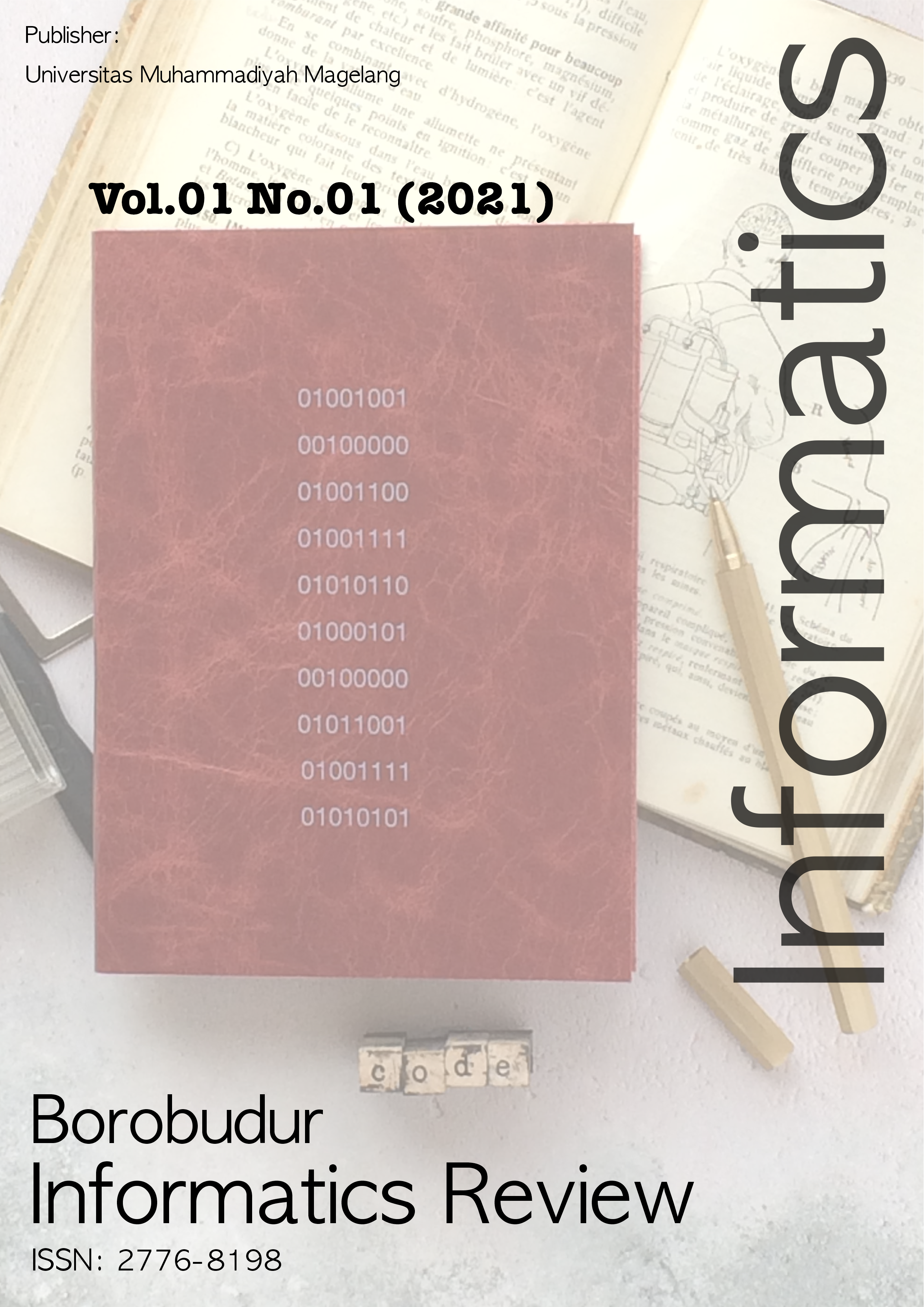Main Article Content
Abstract
This research aims to build a geographic information system that can map the level of flood-prone areas around Sub-DAS Bengkulu. To determine the flood prone areas are used four (4) parameters i.e. riverbank, high ground class, rainfall and settlement using Simple Additive Weighting method and using Trend Non Linier forecasting method. The resulting outer area of the flood map is calculated from The Simple Additive weightingmethod. For five (5) years, from 2014 – 2018 there are 267 data entering intermediate clustering , 477 of data entering low clustering and the latter there are 35 data that enters high clustering . In addition, there is also an external result of prediction Chart of the highest Trend Non Linier in 2021 of 2.3809, in 2022 for 3.14841, in 2023 for 4.04413, in 2024 for 5.06803, and in 2025 for 6.22014.
Keywords
Article Details
References
- Armiyana, A., & Candra, R. M. (2018). Sistem Pendukung Keputusan Pemilihan Sekolah Anak Dengan Menggunakan Metode Analytical Hierarchy Process (AHP) Dan Metode Perbandingan Eksponensial (MPE). Jurnal CoreIT: Jurnal Hasil Penelitian Ilmu Komputer Dan Teknologi Informasi, 3(1), 31–34.
- Badan Nasional Penanggulangan Bencana—BNPB. (n.d.). Retrieved April 29, 2021, from https://www.bnpb.go.id/
- Simamora, I. (2019). METODE TREND NON LINEAR UNTUK FORECASTING KOMPOSISI PENDUDUK KABUPATEN TAPANULI TENGAH MENURUT JENIS KELAMIN TAHUN 2006-2016. JURNAL CURERE, 2(2).
- Supriyatna, A., & Ekaputra, D. (2017). Metode Fuzzy Simple Additive Weighting (Saw) Dalam Pemilihan Ketua Osis. Jurnal PETIR, 10(1), 71–76.
- Utami, R. T., Andreswari, D., & Setiawan, Y. (2016). Implementasi Metode Simple Additive Weighting (SAW) Dengan Pembobotan Rank Order Centroid (ROC) Dalam Pengambilan Keputusan Untuk Seleksi Pengguna Jasa Leasing Mobil. Rekursif: Jurnal Informatika, 4(2).
- Wismarini, T. D., & Sukur, M. (2015). Penentuan tingkat kerentanan banjir secara geospasial. Dinamik, 20(1).
